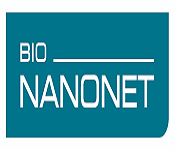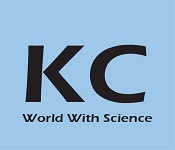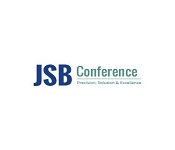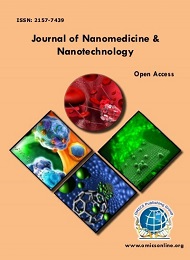Theme: Understanding the Dynamics of Polymers and Nanotechnology connecting Fundamentals to Broad Applications
Polymer Catalysis 2019
Polymer Catalysis 2019
Polymer Nanotechnology conferences invite all the participants from all over the world to attend “2nd International Conference on Polymerization Catalysis, Flexible Polymer and Nanotechnology’’ during December 16-17, 2019 Abudhabi, UAE which includes prompt keynote presentations, Oral talks, Poster presentations and Exhibitions.
While much research and product development in industry is product oriented, it requires scientists with a grasp of the foundations of chemistry, creativity, the ability to work together and enjoy seeing the practical challenges encountered and solutions adopted in the fields of Polymer Chemistry. Polymer Catalysis 2019 covers all the aspects of related field researchers, The forum of scientists and students from all corners of the globe, come together to discuss polymer science and its advances. It also provides a premier interdisciplinary platform for researchers, practitioners and educators to present and discuss the most recent innovations and trends. Conference Series LLC Ltd. Conferences has taken the initiation to gather the world class experts both from academic and industry in a common platform at Polymer Nanotechnology Conferences 2019.
Why to attend our Conference
It promotes the positive contributions of Polymers to help raise awareness and correct misconceptions
This experience helps the Conference to be an interactive forum and encourages a strong level of dialogue and discussion, thus maximizing the benefits of attendance. Each session of the meeting will be included with expert lectures, poster and discussions, join us to design sustainable development processes, advances the business and sustainability in drug production for further health care protection of lives. We are glad to invite you on behalf of organizing a committee to join us, where you are the decision maker for the future.
The conference will be comprised of sessions by world-class experts in the field of Polymer Chemistry. In UAE Polymer Catalysis 2019, International symposiums, B2B meetings, International Workshops will also be organized to discuss the specific topics in the field of Polymer and related fields.
A Unique Opportunity for Advertisers and Sponsors at this International event.
Target Audience for Polymer Catalysis 2019:
Eminent Scientists/ Research Professors in the field of polymer chemistry, Nanotechnology, Nanoscience, Nanomedicine, Junior/Senior research fellows, Students, Directors of polymer research companies, Chemical Engineers, Members of different physics and Chemistry associations
Track 1: Nano Medicine and DNA Nanotechnology
Functionalities can be added to nanomaterials by interfacing them with organic atoms or structures. The extent of nanomaterials is like that of most organic particles and structures; in this way, nanomaterials can be helpful for both in vivo and in vitro biomedical research and applications. So far, the reconciliation of nanomaterials with science such as biocompatible nanoparticles and nanorobots, for diagnosis, delivery, sensing or actuation purposes in a living organism has prompted the advancement of symptomatic gadgets, differentiate specialists, investigative devices, active recuperation applications and medication conveyance vehicles.
Track 2: Nanoscience and Technology
Nanotechnology as characterized by size is normally extremely expansive, including fields of science as different as surface science, natural science, atomic science, semiconductormaterialscience, vitality stockpiling, nanofabrication, sub-atomic designing, and so on. The related research and applications are similarly different, going from expansions of traditional gadget material science to totally new methodologies dependent on sub-atomic self-get together, from growing new materials with measurements on the nanoscale to coordinate control of issue on the nuclear scale.
Track 3: Nano Characterization (SEM, AFM, ATM, FTIR)
Nanocharacterization Techniques covers the principle portrayal methods utilized in nanomaterials and nanostructures. The parts centre around the basic parts of portrayal strategies and their unmistakable methodologies. Critical advances that have occurred over ongoing years in refining systems are secured, and the numerical establishments expected to utilize the procedures are additionally clarified in detail. It is a vital reference for materials researchers and designers searching for a thorough examination of nanocharacterization procedures with the end goal to set up which is best for their necessities.
Track 4: Nanomaterial for Clean and Sustainable Energy
Nanotechnology has developed a sustainable energy production scheme which is one of the most important scientific challenges of the 21st century. The challenge is to design, to synthesize and to characterize new functional nanomaterials with controllable sizes, shapes and/or structures. It is now one of the fastest growing research fields in the world and will hopefully head to the development of a renewable energy economy in which fossil fuel resources will only be used to produce more valuable chemicals. This vision is that energy, environmental and security problems created by the consumption of fossil fuels will be solved once and for all.
Track 5: Nano Materials and Nano Devices
Researchers have not consistently settled on an exact meaning of nanomaterials, however, concure that they are incompletely described by their small size, estimated in nanometers. A nanometer is one-millionth of a millimetre - roughly 100,000 times littler than the distance across of a human hair. Nano-sized particles exist in nature and can be made from an assortment of items, for example, carbon or minerals like silver, however, nanomaterials by definition must have something like one measurement that is not as much as around 100 nanometers. Most nanoscale materials are too little to be seen with the stripped eye and even with customary lab magnifying instruments
Track 6: Semiconductor Nanodevices
Semiconductor nanocrystals (NCs) are produced using a wide range of mixes. They are alluded to as II-VI, III-V or IV-VI semiconductor nanocrystals, in view of the intermittent table gatherings into which these components are framed. For instance, silicon and germanium are bunch IV, GaN, GaP, GaAs, InP and InAs are III-V, while those of ZnO, ZnS, CdS, CdSe and CdTe are II-VI semiconductors. In nanocrystalline materials, the electrons are kept to locales having one, a few measurements when the relative measurement is practically identical with the de Broglie wavelength. For a semiconductor like CdSe, the de Broglie wavelength of a free electron is around 10 nm
Track 7: Thin Film Nanodevices
Nanodevices are nanoparticles that are made to interact with cells and tissues and completing quite certain tasks. The most celebrated nanodevices are the imaging apparatuses. Oral pills can be taken that contain smaller than usual cameras. These cameras can achieve profound parts of the body and give high-goals pictures of cells as little as 1 μm in width. (A red platelet is 7 μm wide .) This makes them exceptionally valuable for analysis and furthermore amid medical procedures. As computer memory ferromagnetic and ferroelectric thin films are used. Thin film technology is being explored as a means to substantially reduce the cost of photovoltaic systems, which are used to collect solar energy.
Track 8: Polymer Nanotechnology
Polymers plans to order the flow patterns and research bearings inside the readiness, portrayal and use of polymer-based composite materials in electrical designing applications. This kind of material has developed to wind up a standout amongst the most completely explored materials nowadays, animated by the interest for asset effective get together of generators, transformers, specialized gadgets, and so on. Novel composites are to be utilized as protecting materials with high warm conductivity and amazing temperature dependability, through which untimely maturing and debasement of gadgets will be maintained a strategic distance from or possibly decreased.
Track 9: Polymer Composites
Particulate fillers are utilized to alter the physical and mechanical properties of polymers from multiple points of view. Polymeric materials are noted for their adaptability, high protection from synthetic compounds, extraordinary attachment to an assortment of substrates, sturdiness, high electrical opposition, toughness at high and low temperatures, low shrinkage upon fix, adaptability, and the straightforwardness with which they can be poured or thrown without framing bubbles. Different sorts of polymers and polymer-grid composites strengthened with filter particles have an extensive variety of modern applications, for example, electrical ventures, business and military flying machines, radiators, anodes, floor covering, composites with warm solidness at high temperature, and so forth. The restored tars with tight three-dimensional sub-atomic system structures have numerous helpful properties, for example, the superb mix of solidness, quality, concoction obstruction, protecting properties and ecological strength. The expansion of such particulate fillers into polymers is basically gone for the cost decrease and firmness change for business applications
Track 10: BioPolymer and Bio-Degradable Materials
Bundling waste structures a critical piece of metropolitan strong waste and has caused expanding natural concerns, bringing about a reinforcing of different controls went for lessening the sums created. Among different materials, an extensive variety of oil-based polymers is as of now utilized in bundling applications. These are basically all non-biodegradable, and some are hard to reuse or reuse because of being mind-boggling composites having changing levels of tainting. As of late, noteworthy advancement has been made in the improvement of biodegradable plastics, to a great extent from inexhaustible normal assets, to deliver biodegradable materials with comparable usefulness to that of oil-based polymers. The extension in these bio-based materials has a few potential advantages for ozone depleting substance adjusts and other ecological effects over entire life cycles and in the utilization of inexhaustible, as opposed to limited assets. It is planned that utilization of biodegradable materials will add to supportability and a decrease in the natural effect related with the transfer of oil-based polymers.
Track 11: Polymerization on Oleffin and Ziegler Nata
An examination on another age of MgCl2-bolstered Ziegler−Natta impetuses, which contain dialkylpropane diethers as inward benefactors and have the property of creating exceedingly dynamic and stereospecific impetuses with no outside giver, has been performed. The conduct of three distinctive diethers (2,2-diisobutyl-1,3-dimethoxypropane, 2,2-dicyclopentyl-1,3-dimethoxypropane, and 2-ethyl-2-butyl-1,3-dimethoxypropane) as inside contributors is contrasted and the conduct of a similar diethers when they are utilized as outer benefactors with an impetus containing diisobutyl phthalate as interior giver. The outcomes acquired demonstrate that the equivalent isospecific focuses are created when the equivalent diether giver is available as an interior contributor or replaces diisobutyl phthalate amid polymerization when it is included as an outer benefactor. The entirety of the present outcomes and of the beforehand acquired discoveries on conventional upheld Ziegler−Natta impetuses has empowered us to achieve a few ends on the job and complementary conduct of inner and outer giver
Track 12: Flexible Electrodes
A one-advance and large-scale manufacturing engineered course for an adaptable lessened tungsten oxide-carbon composite nanofiber film is exhibited by means of an electrospinning system. The WOx– C-NF film shows the uncommon high substance of metal-oxides and great adaptability) without the utilization of adaptable help materials like CNTs or graphene. The WOx– C-NF movie is specifically utilized as an anode in a lithium particle battery (LIB). Contrasted and already announced tungsten oxide anodes, the WOx– C-NF film shows high reversible limit. stable cycle, and enhanced rate execution, without the utilization of added substance carbon, a polymeric fastener and a present gatherer. Additionally, control terminals created by customary procedures bolster the beneficial outcomes of both the detached cathode and metal-oxide inserted carbon 1-D nanofiber structure
Track 13: Recent Development in Polymer Synthesis
In application prospects and execution qualities and in property range and assorted variety, polymers offer oddity and flexibility that can barely be coordinated by some other sort of materials. Polymers are gigantic macromolecules made out of rehashing auxiliary units called monomers. Polymer improvements incorporate combination as well as its auxiliary – utilitarian relationship, polymer bioconjugation, and novel polymerization methods. In Polymerization, numerous monomers are consolidated in a compound response to frame macromolecules of various sizes and shapes. Polymers are prominent in regular daily existence - from plastics and elastomers on the one side to normal biopolymers, for example, DNA and proteins then again.
Track 14: Polymer in Engineering and Technology
Polymer designing and innovation is a piece of the developing field of materials building that spotlights on plastics and different polymers. Polymer Engineering is, for the most part, a building field that outlines, investigations, or potentially alters polymer materials. The forecast of their conduct relies upon our comprehension of these perplexing frameworks.I t is the amalgamation of Polymer Science with Chemical Engineering. polymer handling methods require atomic demonstrating procedures. Close to metals and earthenware production, the ongoing improvements of Polymer Technology have changed the field of material science by expanding the utilization of polymer based substances from building materials to Packing materials, Fancy embellishment articles, Communications, Automobile, Aircrafts, and so on. Engineered polymers have since quite a while assumed a moderately imperative job in present-day therapeutic practice. Polymers are currently a noteworthy materials utilized in numerous mechanical applications.
Track 15: Polymerization Catalysis
Polymer Catalysis has turned into a free and flourishing part of science. Broad improvement of this field is credited to progress accomplished in amalgamation and examination of alleged useful polymers and to progress achieved inhomogeneous, metal complex catalysis. This has prompted the original thought of heterogenization of homogeneous metal complex impetuses. While the compound, monetary and social focal points of biocatalysis over conventional synthetic methodologies were perceived quite a while back, their application in mechanical generation forms have been as of late leap forward in present-day biotechnology, (for example, powerful protein articulation frameworks, coordinated development and so forth)
Track 16: Nano Electronics
Nanoelectronics holds a few responses for how we may build the capacities of gadgets while we diminish their weight and power utilization. A portion of the nanoelectronics zones a work in progress, which you can investigate in more detail by following the connections given in the following segment, incorporate the accompanying subjects. Enhancing show screens on gadgets. This includes diminishing force utilization while diminishing the weight and thickness of the screens. Increasing the thickness of memory chips. Scientists are building up a sort of memory chip with an anticipated thickness of one terabyte of memory for each square inch or greater
Track 17: Polymer Market
The advertising blend is an essential piece of the showcasing of polymers and comprises of the promoting 'apparatuses' you will utilize. Be that as it may, showcasing technique is more than the promoting of blended polymers and plastics. The promoting system defines your advertising objectives, characterizes your objective markets and depicts how you will approach situating the business to accomplish advantage over your rivals. The promoting blend, which pursues from your showcasing technique, is the manner by which you accomplish that 'one of a kind offering suggestion' and convey advantages to your clients. When you have built up your advertising system, it is normally composed down in a promoting plan. The arrangement ordinarily goes more remote than the system, including a subtle element, for example, spending plans. You need a showcasing system before you can compose an advertising plan. Your promoting technique may work well for you for various years yet the subtle elements, for example, spending plans for advertising exercises, of the showcasing plan may should be refreshed each year.
Why in Abu Dhabi
Abu Dhabi is the capital and the second most populous city of the United Arab Emirates (the most populous being Dubai), and also capital of the Emirate of Abu Dhabi, the largest of the UAE's seven emirates. Abu Dhabi lies on a T-shaped island jutting into the Persian Gulf from the central western coast. The city of Abu Dhabi has an estimated population of 1.8 million in 2016.Abu Dhabi houses federal government offices, is the seat of the United Arab Emirates Government, home to the Abu Dhabi Emiri Family and the President of the UAE, who is from this family. Abu Dhabi's rapid development and urbanisation, coupled with the relatively high average income of its population, has transformed the city into a large and advanced metropolis.Today the city is the country's centre of political and industrial activities, and a major cultural and commercial centre, due to its position as the capital. Abu Dhabi accounts for about two-thirds of the roughly $400-billion United Arab Emirates economy.
Scope and Importance
Nanomaterials are regulated under REACH and CLP regulation in the European market while U.S FDA regulates nanomaterials for the American market. Nanoscale materials engineering will have an increasingly important impact on a number of sectors, including biotechnology, electronics, energy, and industrial products Nano-sized ceramic powder market is likely to grow with a healthy growth rate of about 10% per year in the next five years. MWNT filled polymers are successful commercial products in automotive applications. Nanocomposites have found niche applications such as automotive (under the hood and exterior) and beverage packaging. More companies will enter the nanomaterials market.At the same time, there will be an increasing number of business relations such as technology licensing and joint marketing to achieve faster commercialization of the new products The research and development funding for nanotechnology and nanomaterial’s will continue to increase in this decade. The global market for the nanomaterial's in the year 2006 was around the US $14,000, and the global investments are to be increased 50% more by the ending of 2019

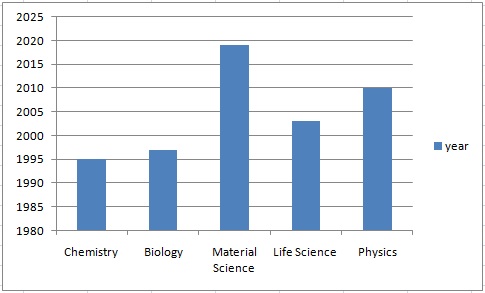
Major Associations and Societies around the Globe:
- Foresight Nanotech Institute
- International Association of Nanotechnology (IANT)
- IEEE Nanotechnology Council
- Institute for Molecular Manufacturing (IMM)
- Microscopy Society of America (MSA)
- NanoBusiness Alliance
- Nanotechnology and Nanoscience Student Association (NANSA)
- Czez and Slovak Crystallographic Association
- Union of Chemists in Bulgaria Chemical Society of Montenegro (HDCG)
- Association of Greek Chemists (EEX)
- Romanian Chemical Society (SChR)
- Slovenian Chemical Society (SKD)
- Serbian Chemical Society (SHD)
- Society of Chemists and Technologists of Macedonia (SHTM)National Center for Nanoscience and Technology (China)
- National Institute for Nanotechnology (Canada)
- Iranian Nanotechnology Laboratory Network
- EU Seventh Framework Programme and Action Plan for Nanosciences and Nanotechnologies 2005-2009
- Russian Nanotechnology Corporation
- National Nanotechnology Center (NANOTEC), Thailand
- National Nanotechnology Initiative (United States)
- National Cancer Institute Alliance for Nanotechnology in Cancer
- National Institutes of Health Nanomedicine Roadmap Initiative
- American National Standards Institute Nanotechnology Panel (ANSI-NSP)
- NanoNed
Top Universities in Finland
- University of Helsinki
- Aalto University University of Turku
- University of Oulu
- Jyväskylä University
- Tampere University of Technology
- University of Tampere
- University of Eastern Finland
- Abo Akademi University
- Abo Akademi University
- University of Lapland
- University of Vaasa
- Tampere Polytechnic
- Turku University of Applied Science
- Turku Centre for Computer Science
- Jyvaskyla University of Applied Sciences
- Haaga Helia University of Applied Sciences
- HAMK University of Applied Sciences /
- Novia University of Applied Sciences
- Arcada Polytechnic
- Lahti University of Applied Sciences
- Centria University of Applied Science
- Seinajoki University of Applied Sciences
Related Societies:
Europe: Erwin Schrödinger Society for Nanosciences | Royal Society - Nanotechnology and Nanoscience | Nanoscale Science & Nanotechnology Group | London Centre for Nanotechnology | Nano Technology Research Association
Asia Pacific: Nano Science and Technology Consortium | National Center for Nanoscience and Technology | Japan Science and Technology Agency | National Nanotechnology Center
Related Conferences
Polymer Chemistry meeting | Nanotechnology | Catalysis conferences | Flexible Polymer Congress
International Conference on Polymerization Catalysis, Flexible Polymer and Nanotechnology, February 20-21, 2019 Abu Dhabi, UAE; 12th International Conference and Exhibition on Materials Science and Chemistry May 20-22, 2019 Zurich, Switzerland; 10th Asia Pacific Congress on Polymer Science and Engineering, January 28-29, 2019 Courtyard by Marriott Seoul Times Square, Seoul, South Korea; Materials Electrochemistry Conference: Advancements and Breakthroughs January 28-29, 2019 Abu Dhabi, UAE; 21st Edition of International Conference on Green Chemistry and Technology November 12-13, 2018 Edinburgh, Scotland; 21st International Conference on Advanced Materials Science & Nano Technology January 25-26, 2019 Dubai, UAE; 7th World Congress and Expo on Green Energy June 24-25, 2019 Barcelona, Spain; 3rd World Congress on Wind & Renewable Energy June 10-11, 2019 Barcelona, Spain; 23rd European Biotechnology Congress September 9-, 2019 Zurich, Switzerland; 10th Annual Conference on Bioenergy and Biofuels April 25-26, 2019 Helsinki, Finland
Conference Highlights
- Polymerization Catalysis
- Nanoscience and Technology
- Nano Characterization (SEM, AFM, ATM, FTIR)
- Nanomaterial for Clean and Sustainable Energy
- Nano Materials and Nano Devices
- Semiconductor Nanodevices
- Thin Film Nanodevices
- Polymer Nanotechnology
- Polymer Composites
- BioPolymer and Bio-Degradable Materials
- Polymerization on Oleffin and Ziegler Nata
- Flexible Electrodes
- Recent Development in Polymer Synthesis
- Polymer in Engineering and Technology
- Nano Electronics
- Polymer Market
- Nano Medicine and DNA Nanotechnology
To share your views and research, please click here to register for the Conference.
To Collaborate Scientific Professionals around the World
| Conference Date | December 16-17, 2019 | ||
| Sponsors & Exhibitors |
|
||
| Speaker Opportunity Closed | |||
| Poster Opportunity Closed | Click Here to View | ||
Useful Links
Special Issues
All accepted abstracts will be published in respective Our International Journals.
Abstracts will be provided with Digital Object Identifier by


